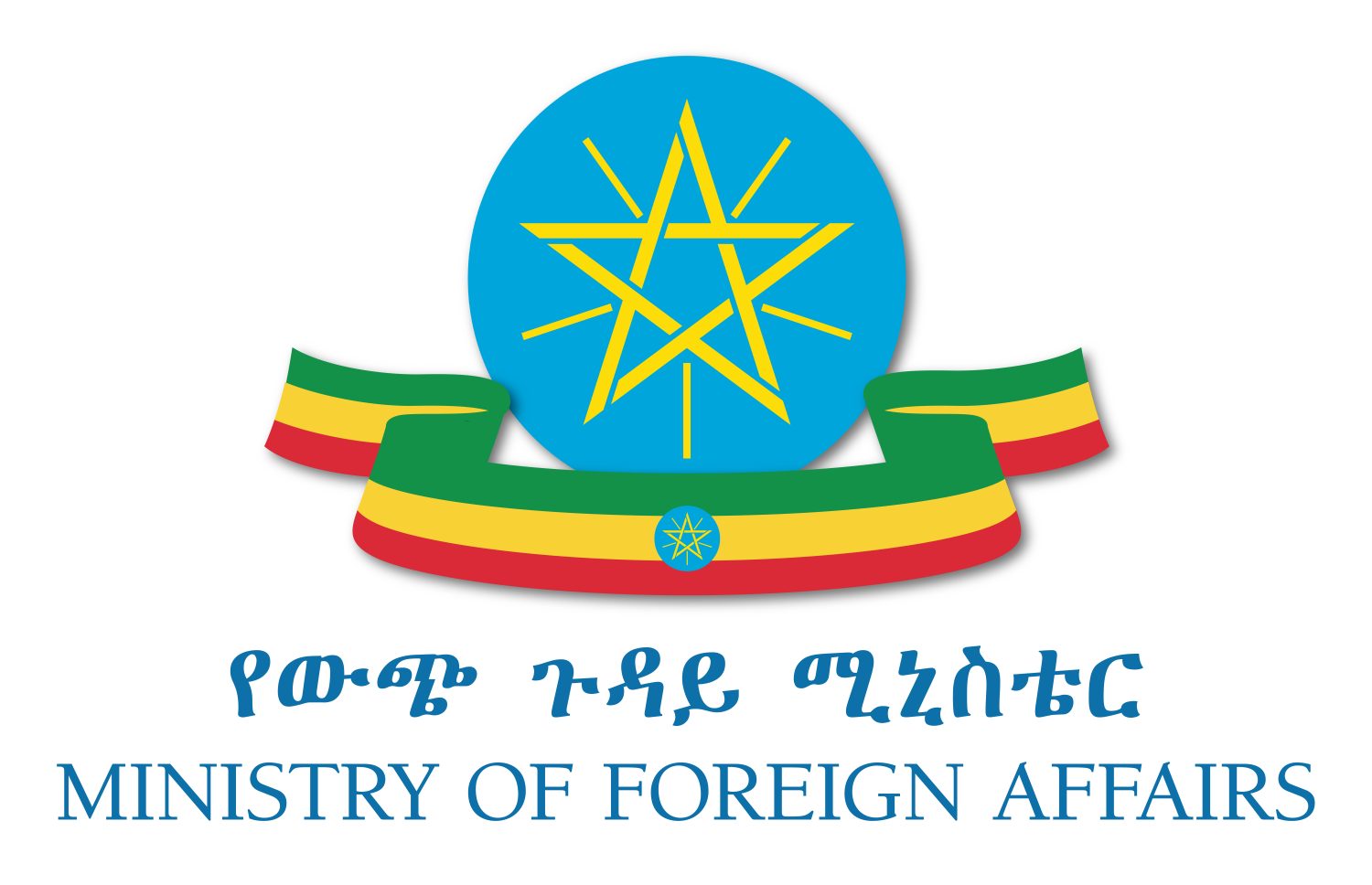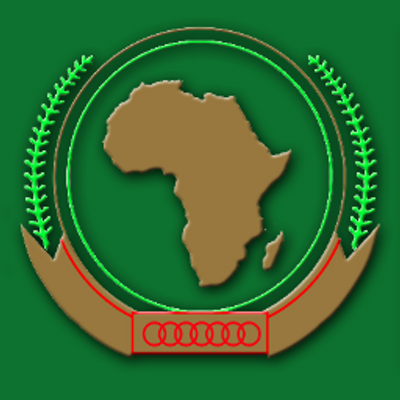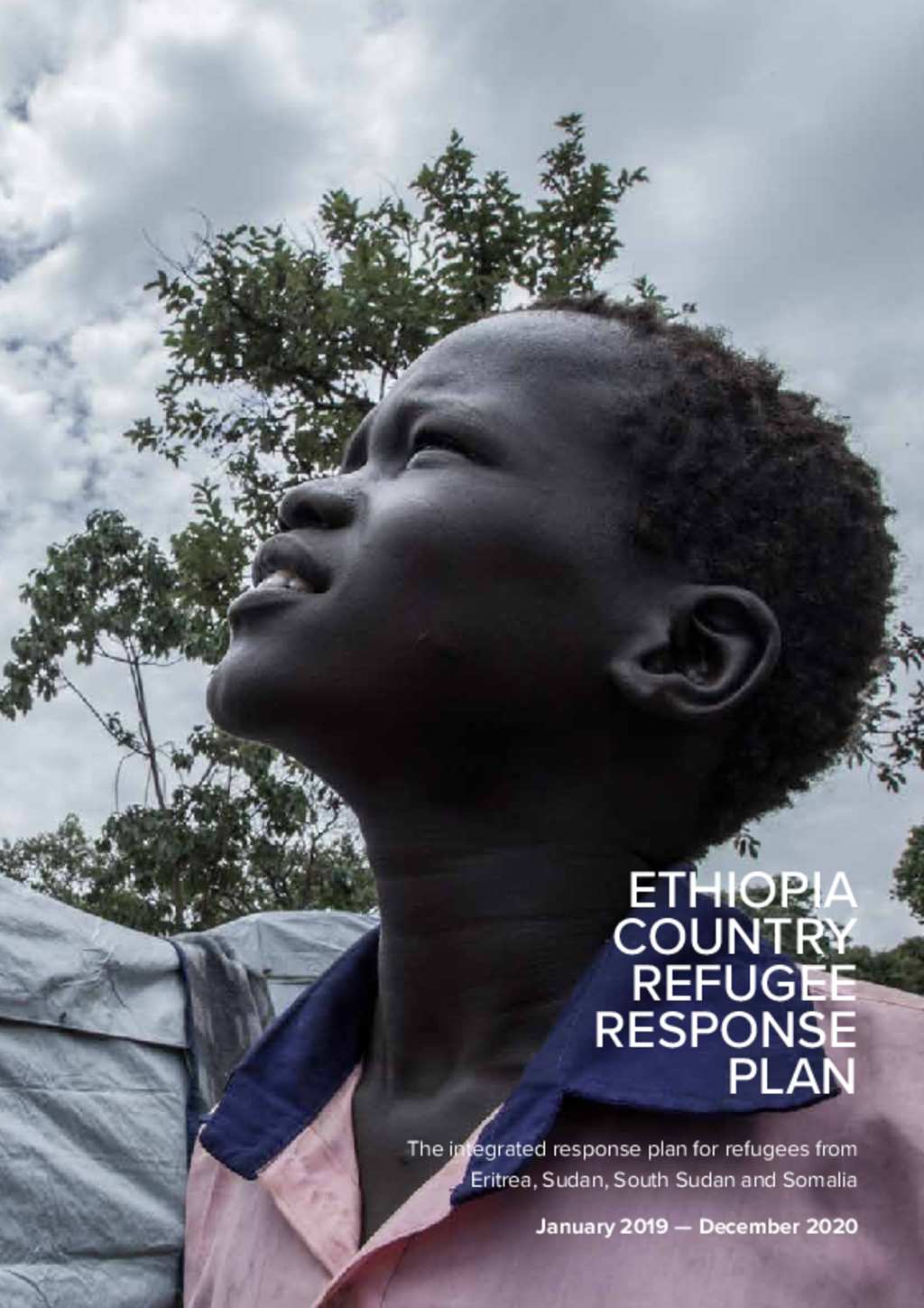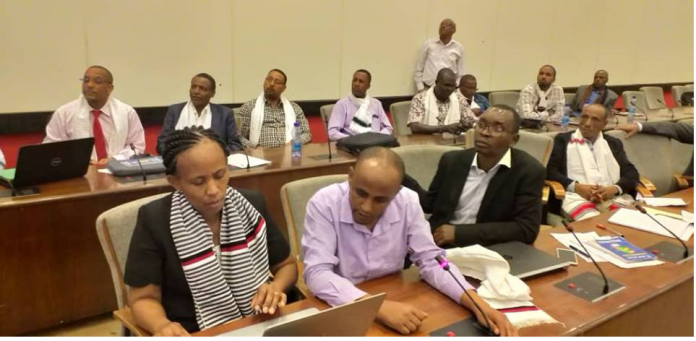By Negus Kebede
As the Novel Coronavirus (Covid-19) is gradually taking its awful roots in sub-Saharan Africa, vivid manifestations of economic trilemma seem to be densely looming on the horizon. Many economic analysts are raising the gravity of the matter as the continent is confronted with an uphill struggle of mobilizing resources to contain the pandemic, a pressing need to stimulate and keep afloat economic sectors and servicing onerous external debt. These profound anxieties around societal health and economic wellbeing in Africa and elsewhere in the world tend to gravitate towards the unforeseen devastation set off by the pandemic. In other words, the current trilemma is not merely one of the inherent structural weakness, but one also encompassing exogenous factors which are dominantly induced by the pandemic. In this context, it enthuses curiosity to see how Africa’s capacity for servicing external debt deteriorates due to economic impacts of Covid-19 and therefore a fervent desire to stress the need to employ debt relieving measures.
With proper contextualization of the real demands of recipient countries and without stringent conditionalities attached, external financing can play a role in complementing national endeavors of achieving sustainable economic development or addressing crises. Holding the same vein of thought, many sub-Saharan African countries were borrowing from external creditors to finance deficits through foreign currencies, and with the optimism that an apparently ineluctable development arc will bend towards the sincere wishes and lofty aspirations of their peoples. In the course of the last decade or so, the trajectory of economic growth in Africa has been more or less positive and an Africa rising narrative has started dispelling the negative myths associated with the continent. Yet one of the main gripes of the African economies is rightly that nothing tangible has changed when it comes to robust structural transformation which can reduce external vulnerability. And with the surreal ambience of Covid-19, the path has taken Africans on an ’emotional rollercoaster’ – oscillating between a better hope of development and a crippling pain of desperation.
Under normal circumstances, external debt is not an aberration or a setback in itself; it only becomes a problem to the extent that the investments financed by such debts fall short of increasing income and export earnings required to service that debt. Given the expected devastating economic impacts of the pandemic, it is hard to foresee African economies generating sufficient hard currency earnings to cover the import of essentials such as food let alone cover debt servicing. Reeling under the heels of a menacing pandemic, African countries have already begun feeling the current pandemic-induced economic costs. In the past, countries have experienced difficulties in repaying external loans due to lack of capacities to generate enough hard currency earnings or dire fiscal management or the loans have not been meant for facilitating industrialization and structural transformation or bad luck. This time around, the root cause is mostly associated with that of a bad luck, as this mysterious malady, which is flouncing the globe, is debilitating their debt-servicing capacity through weakening foreign currency generating engines of the already pathetic economies. The toxic burden of the disease and its offshoots are sending the countries up the river without paddles, unprepared and with none of the resources to remedy the syndrome. Bucketing over the unpaved path, this ill-fate is showing its ugly head at the time when some countries are trying to use external debts to finance transformational projects such as infrastructures and manufacturing industries.
The roots of the debt crisis which is around the corner lie in the impact of Covid-19, which has already become a pervasively vexatious and an all-encompassing plague. So, to better understand how Covid-19 can put sub-Saharan African countries between a rock and a hard place apropos debt servicing, it is quite important to comprehend the transmission channels of the spillover effects. Let us deftly “contact trace” the hard currency generating sectors that have been affected by Covid-19-driven impacts and how their serious injuries, in turn, affect the debt sustainability potency of Africa.
A slash in global demand for African exports weakens debt servicing capacity
One of the menaces of external debt sustainability in Africa emanates from depressed commodity prices and sluggish global aggregate demand due to Covid-19. For most of the time, droops in commodity prices have been followed by currency and sovereign debt crises in Africa, and the recent downward spiral is not an exception. Many African countries are highly dependent on exports to major economies, particularly the resource-rich economies whose oil and other commodities are primarily sold to them will suffer more. A Baker McKenzie’s[1] report also corroborated the same indicating that over three-quarters of African exports to the rest of the world are heavily focused on natural resources and any reduction in demand impacts most of the economies of the continent. Here, there are mixed results though, as the price of oil plummets globally, also partly due to price wars among major producers, it can be an ill wind that blows no good for an importing country, but a heavy kick in the teeth for oil-exporting countries.
A cursory look at United Nations Economic Commission for Africa report[2] (March 16, 2020) indicates that Africa may lose half of its GDP growth rate with growth falling from 3.2% to about 2 % due to a number of reasons which include the disruption of global supply chains. This is added to the recipe for the feared debt explosion in Africa. According to the Food and Agriculture Organisation (FAO), the pandemic has driven down the world prices for major food commodities[3], caused by demand-side contractions and the drop in global oil prices. This was also triggered mostly by expectations of economic slowdown as governments roll out restrictions designed to respond to the health crisis. The March 2020 Coffee Market Report[4] of International Coffee Organization (ICO) indicated its fear that the unravelling situation might present downside risk the promising level of world coffee consumption demand which ICO said that currently demand is estimated to exceed production, estimated at 168.86 million bags, by 0.47 million bags in 2019/20. Similarly, Nikkei Asian Review reported that prices of coffee[5] beans, one of the export products of some African countries, have been weakened by falling demand as consumers shun coffee shops and stay home. Because of the riveting fear of Covid-19, most people around the world have refrained from nonessential dining, resulting in a sharp decline in out-of-home coffee consumption. Other agricultural export commodities like fresh fruits and vegetables, cut flowers and ornamental plants, fish and seafoods, et cetera, are also feeling the heat.[6]
If the worst-case comes, the supply shocks due to morbidity and mortality combined with the restriction on mobility and higher costs of doing business will stifle economic growth in these countries. Even for the available exports, trade capacity has been dampened by logistic bottlenecks restrictions on the movement of workers, just like a fly in an ointment. Demand also fall due to higher uncertainty, increased precautionary behaviour, containment efforts, and rising financial costs that reduce the ability to spend. With the shutting downs of manufacturing facilities and closures of ports in major trading partners of Africa, there has been a resultant decrease in demand for African commodities. Reports also indicate that importers have been cancelling orders due to port closures and as a result of a reduction in consumption in the export destinations.
Covid-19 impacted economic returns worsen debt crisis
The pandemic has shown no mercy to nip in the bud the fledgling returns that African countries are craving to reap from investment in infrastructural or industrial facilities development financed through external loans. This is adding fuel to the prevailing structural weaknesses. It is making decent revenues or profit returns a far cry and, in turn, making the debt servicing devoir a daunting challenge. Adding insult to the injury and to the dismay of the debtors, this will lead to “snowballing of debt because debtors have to borrow more to rollover old debt in order to remain viable.” For example, a portion of Ethiopia’s external debts is meant to finance transformational infrastructural and industrial zones development projects in the real economy whose returns are either long-term or they are expected to be reaped from mushrooming of export-oriented industries. Even as they fight back to manage to produce, it is not easy like shooting fish in a barrel, as markets in the rest of the globe have gone into lockdown. These losses of export orders as well as disruption of supply chains are forcing firms in the industrial clusters to suspend operation with incurring a loss in export revenue while workers facing imminent threats of loss of jobs. Moreover, even if the country emerges from its viral trauma more resilient, the returns on infrastructure projects with long investment cycles may not appear immediately.
With a coronavirus devastation in the making, and absence of robust external demand for products, it is not hard to fathom out that this would imply greater difficulties to service debts. In other words, even if the debtors want to sell products domestically, consumption could not be craned up straight away as most countries have had pitiable purchasing power. But the appalling truth is that external debt arrearage has to be paid back in the currency in which it is borrowed. Added to that, it is almost impractical to get hard currency from them because of a scanty international reserve, just as one cannot get blood from a turnip. In short, the pandemic will definitely break the “link between external debt finance and productive income generation to service this debt.”
A pandemic-stricken tourism revenue, a dented debt repayment capacity
Due to a plunging demand caused by travel restrictions across the globe, it is dead right that African countries are being hard hit by a sharp downturn in inbound tourism, crashing the key source of their revenue. They have already been caught in a pandemic vortex and are being whirled on with a rapidity of crisis and gyration that had made their external debt servicing capability anaemic and fragile.
Africa’s tourism industry which attracted about 67 million tourists in 2018[7] and contributed to about 8.5 percent of GDP is on its knees both on the international and domestic fronts. Furthermore, the epidemic is threatening African airlines, with a considerable decrease in the number of flights to and from the continent. If the travel bans continue further, it could have a detrimental effect on revenues of most airlines that serve some of the world’s busiest air routes. These losses have collateral effects if they trigger cost-cutting effects and lower investments.
On March 26, 2020, the World Tourism Organization (UNWTO)[8] released its assessment of the likely impact of the COVID-19 on international tourism. Taking into account the travel restrictions, UNWTO anticipates that international tourist arrivals will be down by 20% to 30% in 2020 when compared with 2019 figures. This expected fall could translate into a “decline in international tourism receipts of between US$300-450 billion, almost one-third of the US$ 1.5 trillion generated in 2019.” In a nutshell, the organization estimated that “between five and seven years’ worth of growth will be lost to COVID-19.” This pandemic happened when African tourism sector was booming[9] growing 5.6% in 2018 compared to the global average of 3.9% due to improvements in destination development, enhanced air connectivity, simplified visa procedures and marketing. According to the World Travel & Tourism Council (WTTC), travel and tourism contributed US$194.2 billion to Africa’s economy, representing 8.5% of the continent’s GDP with the sector contributed 24.3 million African jobs or 6.7% of total employment. It is unfortunate that the pandemic is reversing earlier gains, while the continent was “just recovering from the aftermath of the deadly Ebola virus.”
A pandemic anxiety affects Africa’s remittance and debt servicing capacity
Migrant remittances usually get amplified mostly when the receiving countries are in crises. In Africa, remittances are vital sources of foreign currency, often exceeding foreign direct investment and official development assistance, are used to solidify the domestic resource bases. In a World Bank report[10] on remittances to low- and middle-income countries, it was indicated that Sub-Saharan Africa received USD 49 billion in 2019 and it was projected to USD 51 billion will flow to the continent in the year 2020. But this time around, Covid-19 will likely negatively affect flows as it fetters both employment and actual works of Africans based abroad with largest remittance-sending countries are locked-down.
In such a gloomy atmosphere of shutdowns, even for those who manage to continue working, they may struggle to send money. In many countries, agents stopped up delivering money transfer services. During the mobility restrictions, sending cash remittances can become a difficult venture when digital alternatives are deficient. Where remitting money digitally is an option, other barricades may prevail for senders and receivers. Among the remittance-receiving countries in Africa, “account ownership and application of digital payments” are not yet well-known, which limits alternatives and the hard currency flows plummet. This domino effect of the infernal spiral will cater into a denting strain on debt servicing.
Disrupted foreign capital flows weaken debt servicing capacity
United Nations Conference on Trade and Development (UNCTAD)[11] said that covid-19 could slash global foreign direct investment (FDI) by as much as 40% in 2020. It is not surprising if foreign investors become distinctly more sober and take a cautious approach because of the uncertainty surrounding investments during crises. Investment confidence in developed countries, which are sources of FDI for African countries will be eroded due to the curtailment of economic activities and income losses. It is quite obvious that green-field investment projects that are already ongoing will also be affected by this. Many enterprises that operate at lower production capacities will “temporarily halt new investment in physical assets and delay expansions.” In addition to fewer capital inflows, there have been lots of legal outflows since capital is seeking safer financial assets.
Exporting capacities of African countries need foreign investment that will bring equipment, intermediate goods, know-how and foreign capital. But a declining trend in FDI inflow will create binding foreign exchange constraints that will elicit “sharp currency devaluations” that undermine Africa’s debt-servicing capacity and critical imports required their export-oriented industrial activity.
Undermined efforts of repatriating illicit financial flows, debilitate debt serving capacity
Another exigent nuisance that debilitates Africa’s debt-servicing capacity is that the continent has been hamstrung by illicit financial outflows. Quite evidently, the most likely destinations for the lion share of finances are both advanced economies and emerging economies, mainly due to trade mis-invoicing and tax evasion by some multinational companies applying a sophisticated modus operandi. Rampant corruption in some countries and lack of good domestic policies as well as strong institutions have also contributed to the illicit outflows. A very recent report by African Growth Initiative at Brookings[12], “Illicit financial flows in Africa: Drivers, destinations, and policy options” indicated that “between 1980 and 2018, an estimated US$1.3 trillion has left sub-Saharan Africa in the form of illicit financial flows, posing a central challenge to development financing.”
Notably though, the precedent decade has seen increased exertions from the global community toward reducing illicit financial flows. On the other hand, some are circumspectly expressing worries that the outbreak of Covid-19 may distract ongoing efforts by some African countries of repatriating smuggled funds or may exacerbate illicit outflows. This, coupled with lack of the judicial capacity necessary to produce legitimate requests, lack of cooperation from some developed economies and differences in legislations, may delay or complicate the process of asset recovery, which might be used as tool to solidify the domestic resource base of African countries.
What should be done to relieve Africa’s debt burdens?
Given the above factors, it can be concluded with a mathematical certainty that Sub-Saharan African countries lack the ability to respond to such a suffocating pandemic and an economic shock while servicing loans. Even if any of the Sub-Saharan countries shows no evidence of debt crisis for the time being, they are just asymptomatic ephemerally, but the latent impact will be felt acrimoniously in the course of time. Great caution must be exercised to avoid turning fledgling economic gains into failures. So, African economies need to be equipped with strong “respirators” to prevent the inhalation of noxious debt crisis. That said, in order to circumvent destructive and pervasive debt crises, valiant efforts to dispel looming debt crisis will need to flow substantial volumes of aid into Sub-Saharan Africa, economic rescue packages and debt relief measures.
For the most part, it is incumbent upon the international community and African countries to coordinate strenuous efforts to resolve imminent debt crises through novel and immediate debt relief packages including rescheduling, reduction and total cancellation of accumulated debts based on rapid assessment of the situations and pressing needs of the debtors. Nonetheless, debt relief measures alone cannot be an automatic guarantee for weathering the economic shocks. African countries still need to garner new development assistance in the form of grants or near-grants to help them reinforce immediate fiscal space and liquidity and support in the areas of balance of payments to make up the lost revenues. In addition, accelerated disbursements of existing programs resources from Africa’s development partners, especially front loading of budgetary supports, are of utmost importance.
A synchronized global response is also essential for the deployment of rescue packages to address pressing financial needs for allaying the liquidity dearth and adequate financial resources should be poured to Africa from the US$5 trillion package recently pledged by Group of 20. While the pledge has been greeted with vigour, here, it is important to pore over what these stimulus packages hold in store particularly for sub-Saharan Africa. Essentially, the packages must allow countries to meet their needs for foreign exchange, finance ongoing and new domestic investments and cushion the decline in aggregate demand and domestic production. Needless to say, it should also help restore investor confidence by replenishing official reserve holdings and limit contagion effects of the crises.
But in the long-run, it is an imperative necessity for African countries to fight tooth and claw in shaping up and diversifying their economic structures which will enable them build the capacity to absorb financial and economic shocks and more room for maneuver to deal with emerging economic setbacks. The best remedy to cure the debt syndrome would be maintaining and propelling robust economic growth with salvo of viable and well-thought reforms. Economic “immuno-deficient” countries are always vulnerable to any shock. There is no intention of preaching a utopian dream here, but economic development can be actualized in the continent as it happened in any other societies in the world. By neutralizing the downbeats of the pandemic on productive investments, the returns can be put in the upward trajectory as the continent has a demographic dividend and low-cost advantages. African countries must also encourage a progressively increasing savings rates particularly from households, which is an essential cushioning factor for external debt, as it was witnessed in many East Asian countries like China.
In that sense, a fierce execution of African Continental Free Trade Area will provide a much-needed international platform to boost up intra-Africa trade and industrialization through unimpeded economic streams and interconnectedness. Its tremendous economic potential can offer worthwhile opportunities for both domestic and foreign businesses looking for new markets and long-term investments with favorable returns. Covid-19 has to prepare Africa with vital lessons that will allow the continent to reclaim its deserved glory by incessantly building a shock-resilient capacity. The building blocks of resilience should be seamlessly ingrained into various aspects of African societies and economies.
To keep the crisis at bay, the need for African countries to leverage international support so that developed economies cooperate recovery of funds flew out of the continent illicitly, cannot be emphasized enough. Ongoing efforts from the global community toward curbing illicit financial flows must be scaled up and shouldn’t be discontinued because of the pandemic. It is also pertinent to put in place and reinforce mechanisms designed to deter illicit financial outflows during and after the pandemic. Equally important is keeping the house in order as the shambles at home will do the enduring damage to the continent’s path into a veritable land of opportunity.
On the whole, the impending debt crises would happen driven through exogenous factors which are dominantly induced by the pandemic; and, in this case are beyond Africa’s manageable proportion. In this vein, it is crystal clear that no one in particular is to blame for if default or debt crisis is to ensue because of this plight, as it happened as an external bolt from the blue. At this time, it may be difficult to determine the extent of the impact on the debt servicing capacity of each country but it is apparent that the pattern suggests that it is not beyond the potential reach of being an economic downside. Apart from the Covid-19 impact, some also argue that the problem is not that African countries are borrowing excessively, but rather they are paying large amounts of interest. Of recent, there are some debt-reliving measures being initiated by multilateral financial institutions which deserve praises. Yet, the magnitude of the flurry demands a more decisive and an enhanced collaboration from international partners and implementation of both familiar and new-fangled curative measures that Africa can flatten the debt distress curve and thwart a huge surge of economic and social damages before the conditions for crises fast mature irreversibly. There is no qualm that Covid-19 with its repulsive multifaceted impacts is the mortal enemy of all peoples of the world which shouldn’t be allowed to live with under the same sky.
*****
This article was originally posted in the Ethiopian Reporter (https://www.thereporterethiopia.com/article/relieving-africas-bedridden-debt-servicing-capacity-covid-19-induced-economic-debility) on April 25, 2020.
Author’s Profile and Disclaimer: Negus Kebede is a Minister Counsellor at the Ethiopian Embassy in Beijing, China. His research interest encompasses issues related to economic policy and planning, economic diplomacy, foreign economic policies and strategies, international business, regional economic integration and international economic relations. He holds a Master of Arts Degree in Economic Policy and Planning from Makerere University. The author contributed this article on his personal capacity. The opinions expressed in this article are the author’s own and do not necessarily reflect the view of the organization that he works with.
Endnotes:
[1] https://www.bakermckenzie.com/en/insight/publications/2020/03/the-impact-of-covid19-on-african-trade
[2] https://www.uneca.org/sites/default/files/uploaded-documents/stories/eca_analysis_-_covid-19_macroeconomiceffects.pdf
[3] http://www.fao.org/2019-ncov/q-and-a/en/
[4] http://www.ico.org/documents/cy2019-20/cmr-0320-e.pdf
[5] https://asia.nikkei.com/Business/Markets/Commodities/Coffee-bean-prices-slump-as-consumers-stay-home-over-coronavirus-fears
[6] https://www.selinawamucii.com/impact-covid-19-africas-agriculture/
[7] https://www.africanews.com/2019/09/24/africa-2nd-fastest-growing-tourism-region-in-the-world/
[8] https://www.unwto.org/news/international-tourism-arrivals-could-fall-in-2020
[9] https://www.wttc.org/about/media-centre/press-releases/press-releases/2019/african-tourism-sector-booming-second-fastest-growth-rate-in-the-world/
[10] https://blogs.worldbank.org/peoplemove/data-release-remittances-low-and-middle-income-countries-track-reach-551-billion-2019
[11] https://www.nytimes.com/reuters/2020/03/26/world/europe/26reuters-health-coronavirus-un-investment.html
[12] https://www.brookings.edu/wp-content/uploads/2020/02/Illicit-financial-flows-in-Africa.pdf



